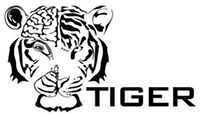150929 Golomb
Bernstein Center Freiburg Bernstein Seminar
|
 |
|
David Golomb
Ben-Gurion University of the Negev, Israel
Response of layer-4 circuits in the barrel cortex
to whisking and touch | |
|
Tuesday, September 29, 2015 17:15 h |
Lecture Hall (ground floor) Bernstein Center Freiburg Hansastraße 9a 79104 Freiburg |
Abstract: Layer-4 (L4) circuits in the barrel cortex are simpler than other cortical networks: they are composed of mutually coupled excitatory (E) and inhibitory (I) neurons and are innervated by the VPM thalamic (T) nucleus. Experimental recordings by Soboda and colleagues on behaving mice during whisking in air or during touch with a pole revealed the following results: when the animals do not whisk, the firing rates of T, E and I neurons (from the fast-spiking type) are 6, 1 and 9 Hz respectively. When mice whisk, the corresponding firing rates are 12 (T), 1(E) and 20 (T) Hz. T neurons respond to touch by firing about 0.6 spikes/touch within a narrow time window (~3ms), whereas E and I neurons fire 0.6 and 2 spikes/touch respectively. What is the mechanism that enables E neurons in L4 to filter out whisking signals while responding well to touch signals? Why do I neurons, but not E neurons, increase their firing rates during the transition from non-whisking to non-whisking? To answer these questions, we construct and analyze a model of a diluted cortical network composed of E and I (FS) neurons innervated by Poisson-firing T neurons. The model is based on the connectivity patterns and synaptic properties of networks in the C2 barrel of the mouse. The numbers of neurons (1600, 100 and 200 of E, I and T cells) are not very large. If the average numbers of pre-synaptic cortical inputs to a post-synaptic neuron are not too large, the level of synchrony among neurons is moderate, and the model's behavior is qualitatively similar to what is expected from networks in a balanced state. For large enough I-to-I synaptic inhibitory conductance, the firing rates of both E and I populations during whisking increases linearly with the thalamic firing rate. Decreasing this conductance transfers the network into a state in which the I neuronal population is balanced whereas E neurons fire at low rates (1 Hz) that depend only weakly on the thalamic firing rate. Strong cortical response to touch is generated by the "window of opportunity" mechanism that enables E neurons to fire in response to brief thalamic input before cortical inhibition silences them. This mechanism is sensitive to the duration of synaptic delays and the decay time of AMPA-mediated excitation. Balanced state theory explains qualitatively the activity of L4 circuits during whisking, but transients control their response to touch. Host: Ad Aertsen |
|
|
The talk is open to the public. Guests are cordially invited!
www.bcf.uni-freiburg.de |
|







|
|

